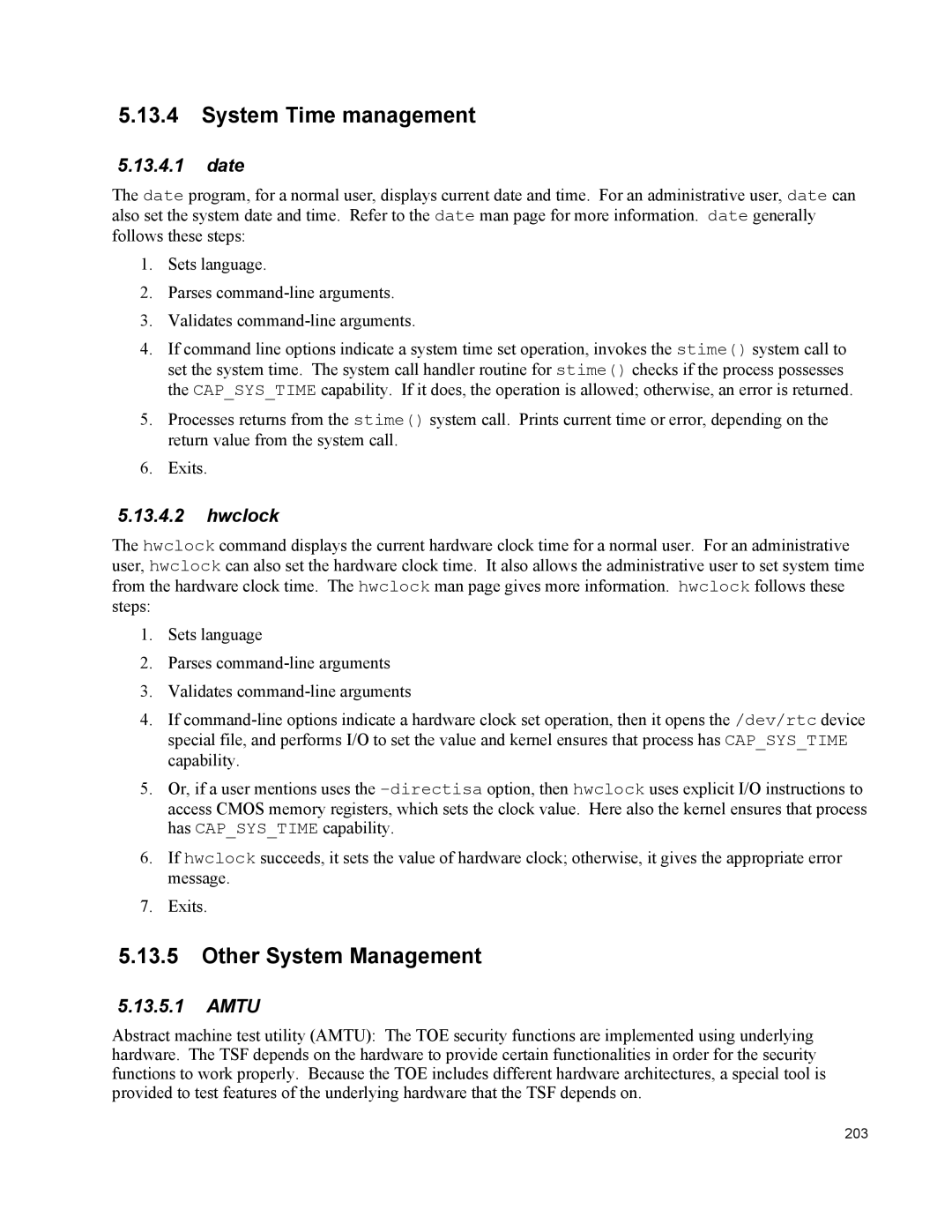5.13.4System Time management
5.13.4.1date
The date program, for a normal user, displays current date and time. For an administrative user, date can also set the system date and time. Refer to the date man page for more information. date generally follows these steps:
1.Sets language.
2.Parses
3.Validates
4.If command line options indicate a system time set operation, invokes the stime() system call to set the system time. The system call handler routine for stime() checks if the process possesses the CAP_SYS_TIME capability. If it does, the operation is allowed; otherwise, an error is returned.
5.Processes returns from the stime() system call. Prints current time or error, depending on the return value from the system call.
6.Exits.
5.13.4.2hwclock
The hwclock command displays the current hardware clock time for a normal user. For an administrative user, hwclock can also set the hardware clock time. It also allows the administrative user to set system time from the hardware clock time. The hwclock man page gives more information. hwclock follows these steps:
1.Sets language
2.Parses
3.Validates
4.If
5.Or, if a user mentions uses the
6.If hwclock succeeds, it sets the value of hardware clock; otherwise, it gives the appropriate error message.
7.Exits.
5.13.5Other System Management
5.13.5.1AMTU
Abstract machine test utility (AMTU): The TOE security functions are implemented using underlying hardware. The TSF depends on the hardware to provide certain functionalities in order for the security functions to work properly. Because the TOE includes different hardware architectures, a special tool is provided to test features of the underlying hardware that the TSF depends on.
203
